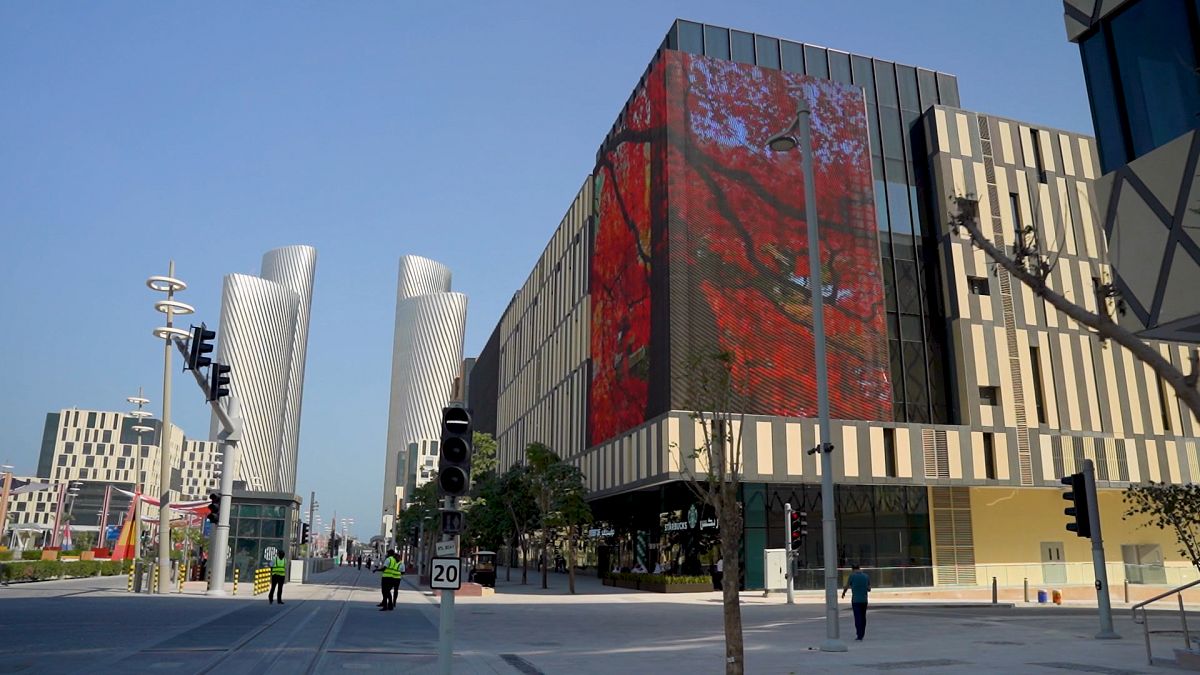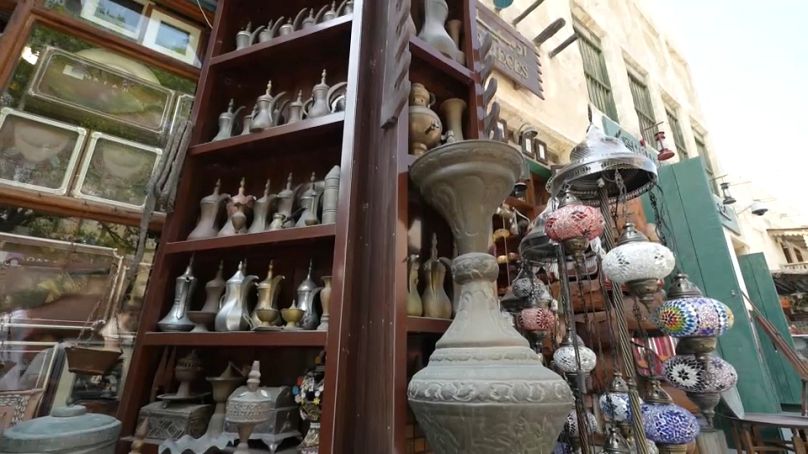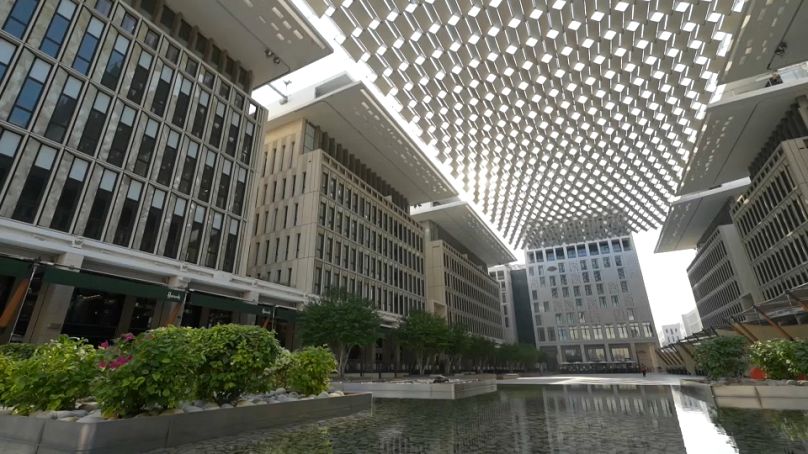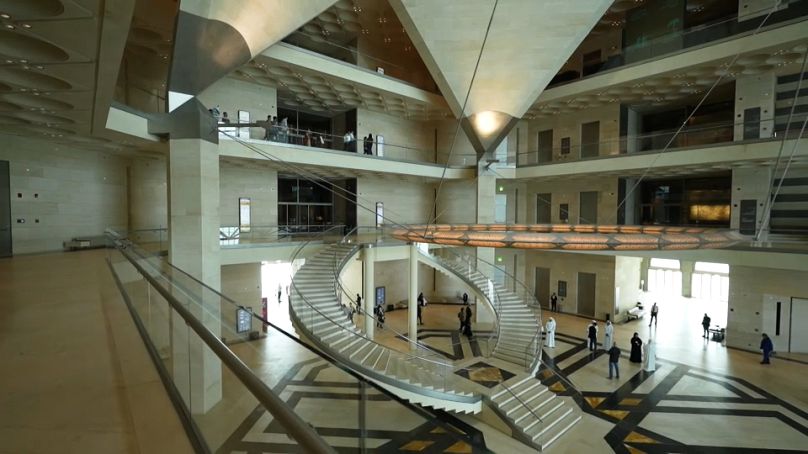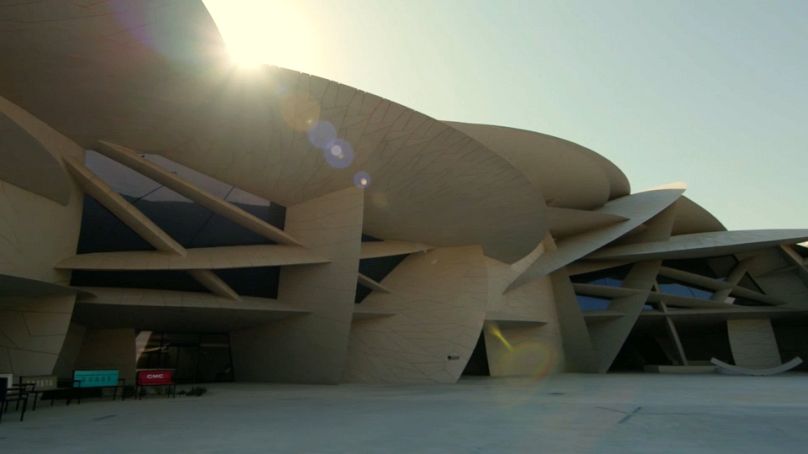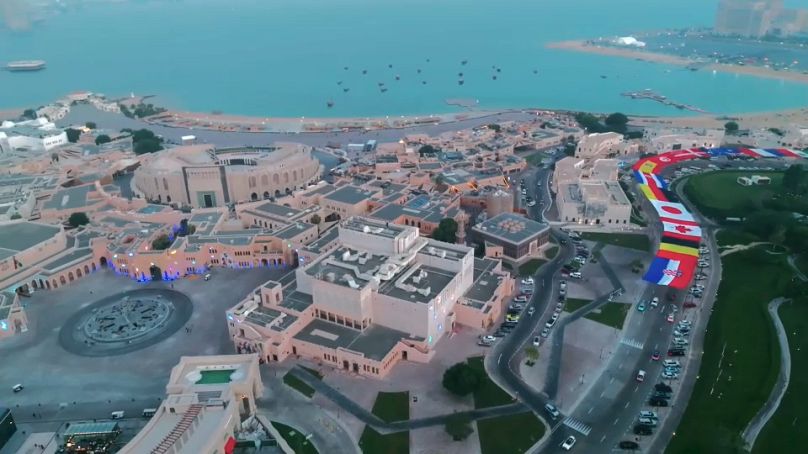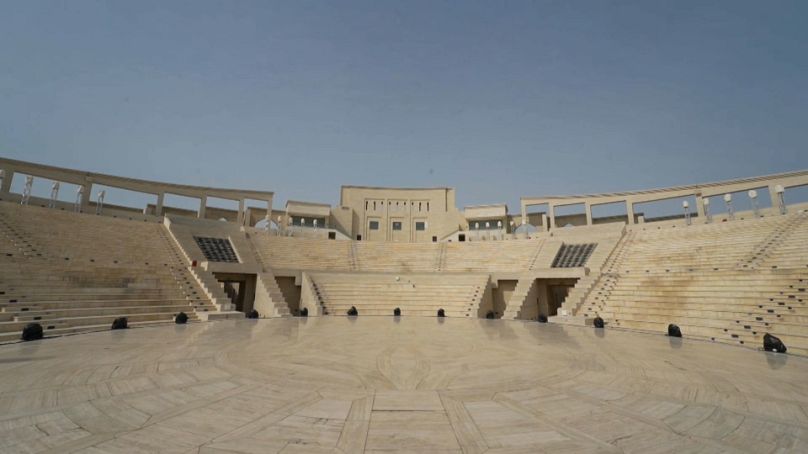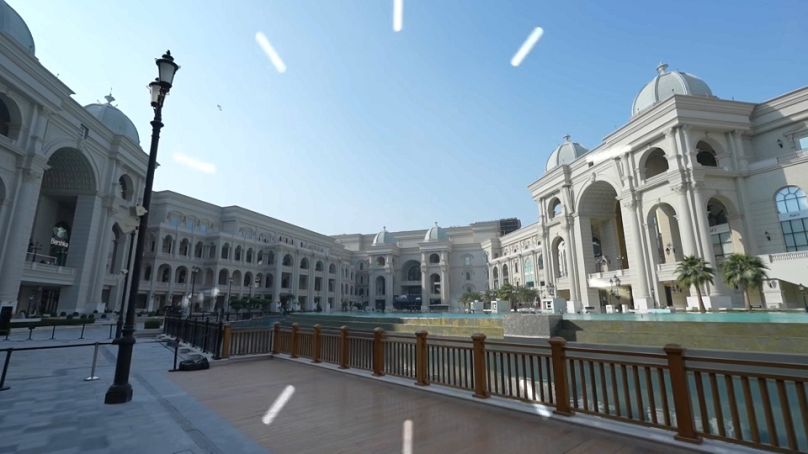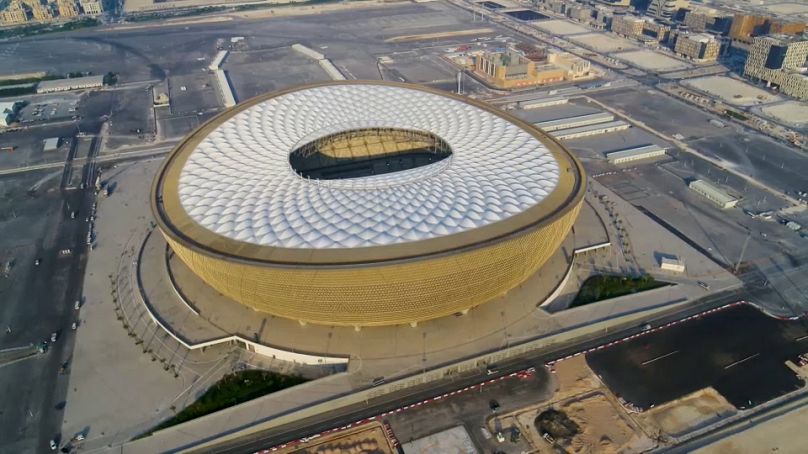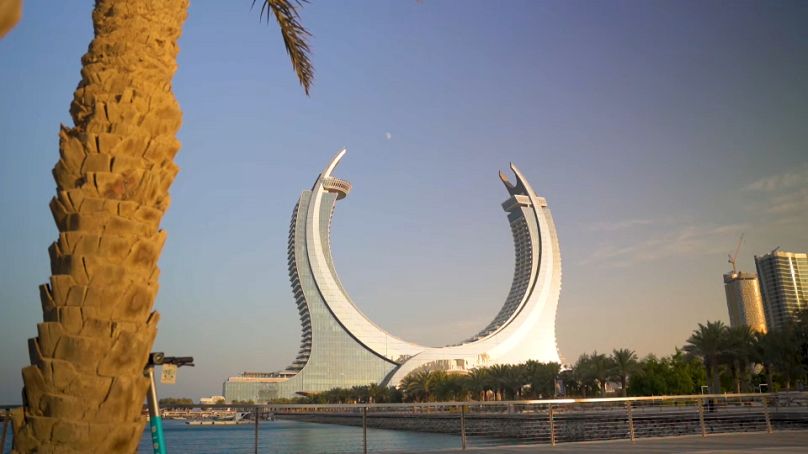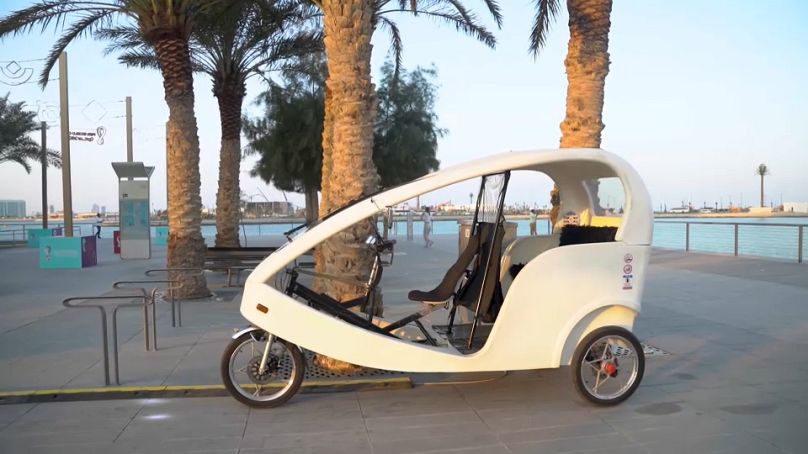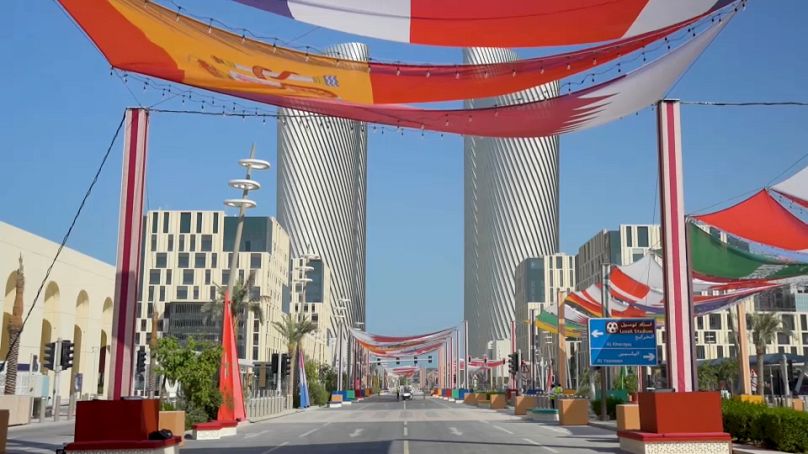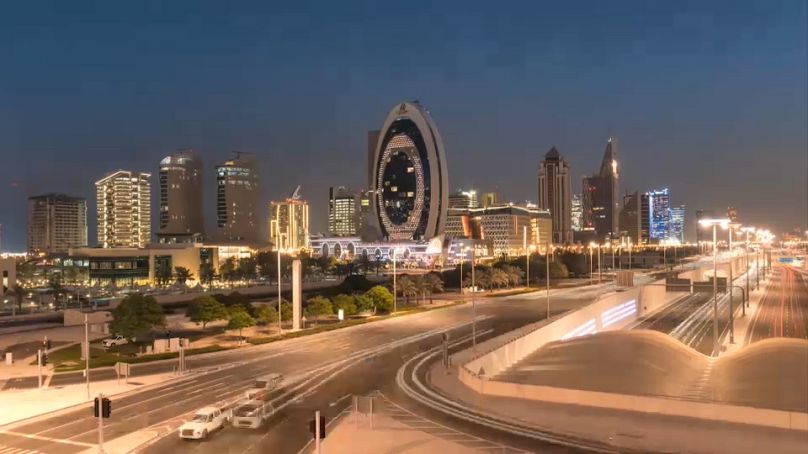In the midst of the first-ever World Cup to be hosted in the Middle East, Qatar is front and centre on the global stage. But there’s more to do here than just watch international football.
It’s been called the world’s best-kept secret, but now the secret is out. The first World Cup ever to be hosted in the Middle East kicks off on Sunday, November 20th, and Qatar will be front and centre on the global stage.
Football fans travelling to the country to support their national teams will be able to spend their free time discovering that Qatar has much more to offer visitors from around the globe than a major international football tournament.
But one item uniting all international fans and tourists throughout the FIFA World Cup is the digital Hayya Card. ‘Hayya’ means ‘come along', the card acts as an entry permit to the country, and an entry pass to the stadiums, as well as providing free travel on public transport.
Ahmed Al-Binali is the Mobility Operations Director, for the Supreme Committee for Delivery & Legacy.
"Free transportation is a very important aspect of the card, with it you can access the metro, buses, and all public transport for free. A second important aspect is the journey planner. We would encourage everyone to use the Hayya Card Journey Planner to plan their journey. The card will provide you with the latest notifications in terms of public transportation, as well as pre-booking and booking your taxi."
No visit to Doha is complete without a walk through the iconic Souq Waqif. The busy trading market is where tourists and locals alike come together to get anything from spices to souvenirs.
Take a stroll down any winding passageways and you’ll surely see something that catches your eye. And once you’ve had your fill of the Souq, which transports you to the past, let’s fast forward into the future – to the lesser-known, but equally impressive, Msheireb – right across the street.
Hailed as one of the first sustainable downtown regeneration projects in the world, Msheireb’s architecture blends modernity and culture, with a mix of the past, present, and future, to bring new life to Doha’s old commercial district.
Still looking ahead, we visit the crown jewel of Qatar’s many museums. The newly-renovated Museum of Islamic Art recently re-opened after a major overhaul.
When it first opened its doors at the edge of Doha’s Corniche in 2008, it was meant to be a transformational moment for the country as a global cultural destination. Fast forward 15 years and the reimagined museum’s next chapter features 18 galleries that explore Islamic art, history, and culture.
Dr. Julia Gonnella, is the Director of the Museum.
"The Museum of Islamic Art per se is a great tourist attraction. Its incredible architecture was built by the Pritzker Prize-winning architect I.M. Pei. It’s one of the most amazing architectural gems in the whole region. That’s to start with. The other thing is the collection of Islamic Art in MIA, in this museum, is outstanding, it is really world-class. If you want to explore Islamic Art, this is the place to go."
Across the street from the Museum of Islamic Art is the equally impressive Jean Nouvel-designed National Museum of Qatar. Before the discovery of oil and gas here, Qatar was primarily a pearl diving community.
Sprawled across a massive 40,000 square metres, Qatar’s history is explained, particularly the country’s evolution from its humble beginnings to becoming an affluent cultural hub. The French architect’s design was inspired by the commonly found and naturally occurring crystal formations known as the desert rose. The immersive experience takes visitors on a visual journey through the country’s history, dating back from the pre-historic era, to the present day.
Tania Al Majid, is the Deputy Director of Curatorial Affairs, at the National Museum of Qatar.
"So prior to the discovery of oil in 1939, the people of Qatar depended on movement and seasonal migration. So during the summer months, they’d be on the coast for the pearling season and then during the winter months, they’d move inland to the desert in search of grazing for their animals and in search of water resources as well."
The Katara Cultural Village is where artists, scholars, and football fans meet.
Similar to Souq Waqif, take a stroll down any of these winding passageways and you’ll eventually get to the country’s creative hub. Whether it’s the Katara Studios, which has produced the soundtrack to this year’s FIFA World Cup, to the opera house or the waterfront amphitheater, home to numerous concerts and festivals.
Malika M. Al Shraim, is the New Media Department Manager, at Katara Cultural Village.
"The vision of Katara is to create a cultural hub, to import other cultures, and export our culture and heritage to others through the festivals that we plan, do, or host within Katara in collaboration with different embassies living in Qatar."
Next, we head to Lusail, Qatar’s city of the future, Berthold Trenkel, is the CEO, of Qatar Tourism.
"Lusail is a new city. Where we’re standing, 10 years ago, was probably just rocks and sand and nothing existed. We have the brand-new Place Vendome, a luxury high-end shopping mall and probably one of the most interesting and ‘wow!’ places to go if you want to explore shopping. And then we have, of course, the Lusail Boulevard. So, people will hear lots more about Lusail and after the World Cup, Lusail will be a household name."
This may well be the case as the Fifa World Cup final will be played there. In fact, what makes Lusail so unique is that it’s a city created with the World Cup in mind. From design, to layout to execution, with a metro and tram to transport football fans around, and, of course, the Lusail stadium which will host the final match.
The city is nearly 20 years in the making. Constructed using the latest, cutting-edge technology, and with sustainability and connectivity as its cornerstones, Lusail is aiming to be the most ambitious new development in Qatar.
Esmat Zaidan, is the Associate Professor of Public Policy at the Hamad Bin Khalifa University.
"The name Lusail was derived from a rare flower that is indigenous to the region, and it’s said to be a true symbol of the ethnicity of the place. The founder of modern Qatar, Sheikh Jassim bin Mohammed al Thani, was born in Lusail, he lived in Lusail and also built the castle which at that time happened to be the centre of governance. A century later, the government of Qatar started making plans in order to develop Lusail and transform it into a hypermodern city."
As well as reflecting traditional shapes and architecture, Lusail has been designed to be pedestrian-friendly. The transportation system in the city ranges from metro and car to more unique options.
Muhameed Lawa, is an E-rickshaw driver.
"My rickshaw is for rent, you pay sixty riyals 60 Qatari Riyals (16.5 euros) and I take you around from here, the marina, the night market, and up to the Vendome mall, and then you come back."
Since 2005, property developer Qatari Diar has been in charge of the construction, Mr. Khalid Alhammadi is the Asset Management Manager.
"We make sure that this city will act as a smart city. Many initiatives have been taken to work, to approach this objective. One of those, particularly, is the LRT, (Light Rail Transit) the Lusail tram. So, this minimises vehicle passes and encourages people to move around using the LRT system."
The tram, metro, and city car parks are controlled from one central hub. Mr. Waleed Alsaadi, is the Director of the Infrastructure, Facilities, and Landscaping Department at the Lusail Command and Control Centre.
"The Lusail command and control centre, LCCC, is considered the centre of intelligence that operates the entire city. It's utilised with the advanced technology to operate, monitor, and manage the city infrastructure."
Sustainability is a key feature of the city. As well as controlling the telecoms and security network, it is the LCCC that controls the city’s infrastructure such as waste, gas, and cooling systems.
Esmat Zaidan, is the Associate Professor of Public Policy at the Hamad Bin Khalifa University.
"Lusail was built to fulfill the sustainability, ambition and goals of the country. And also to provide Qatar with a new city model to the entire world."
Lusail extends across an area of 38 square kilometres. The Boulevard is the urban heart of the city and it serves as Lusail’s key business, food and retail hub. Its design is based on the most famous street in Paris, the Champs Elysées.
And as night falls, Lusail has plenty of activities to keep visitors entertained. From a drone show, to live music and the fan zones which will be in place throughout the whole of Qatar 2022, ensuring that it lives up to its design promise as a World Cup city.
The World Cup offers the opportunity to see more than just the games. Whether it’s the best art, culture, or locations Qatar has to offer.

